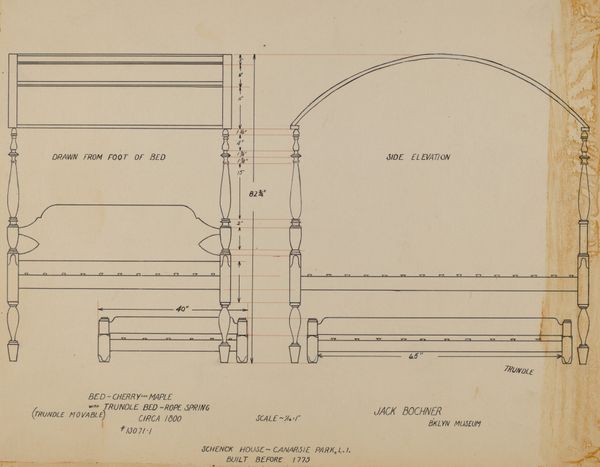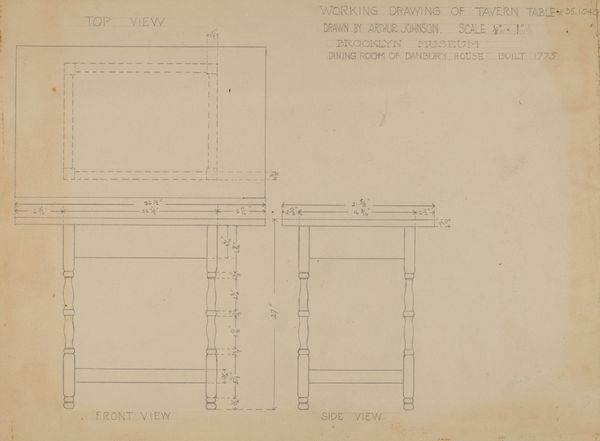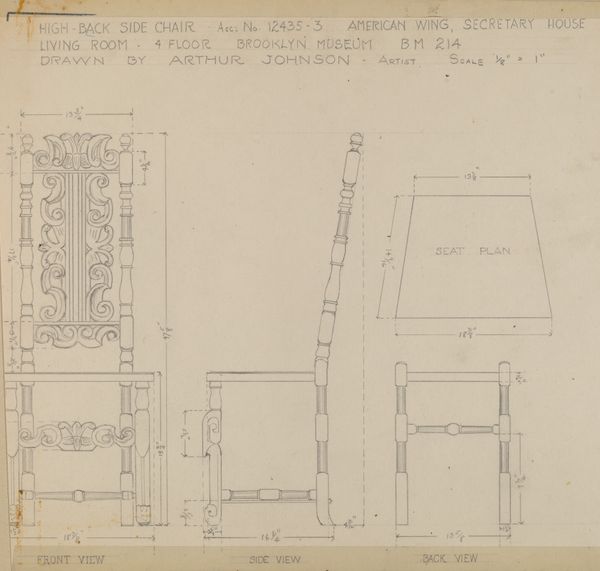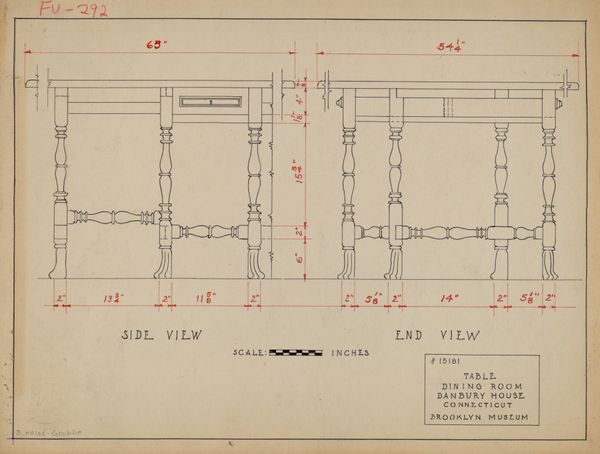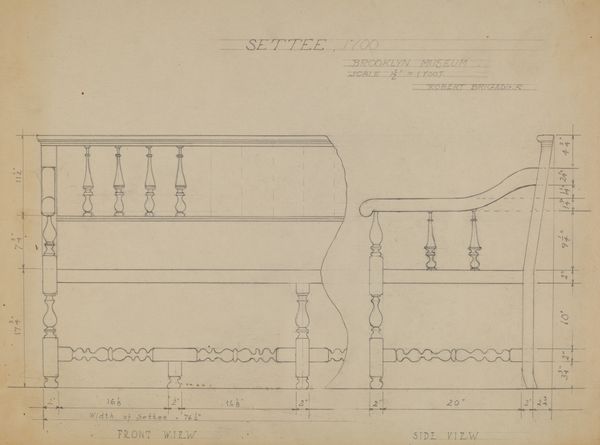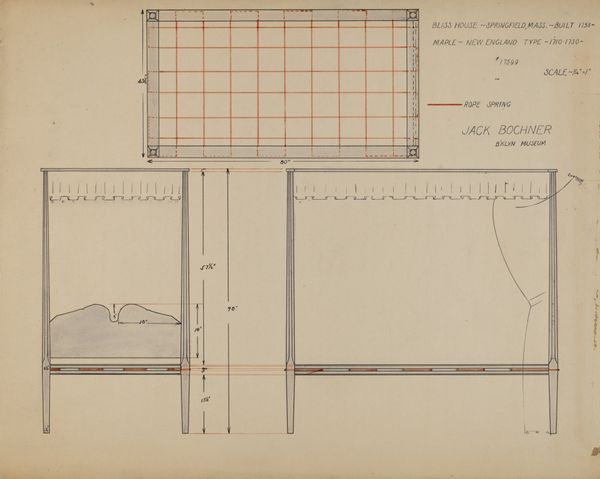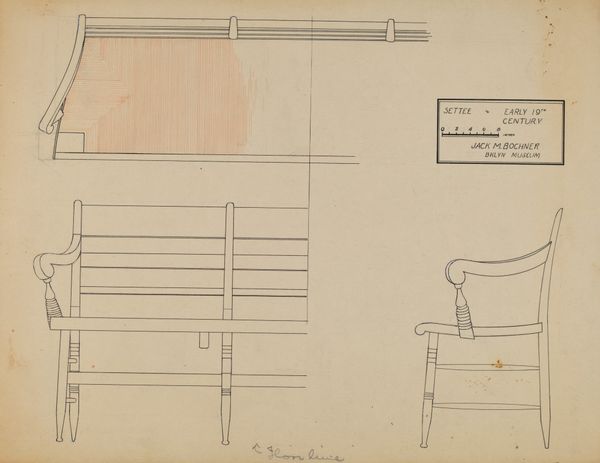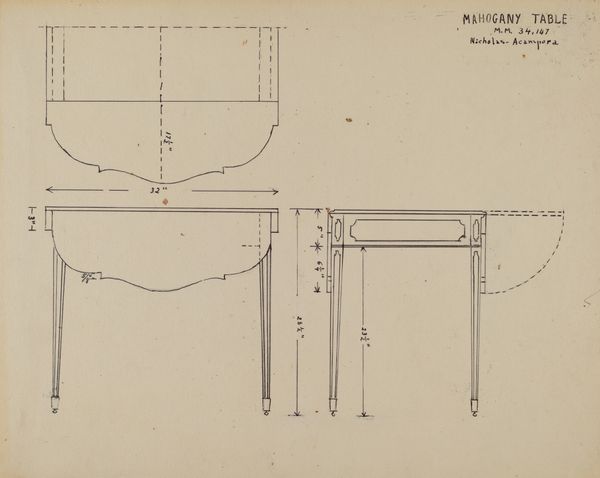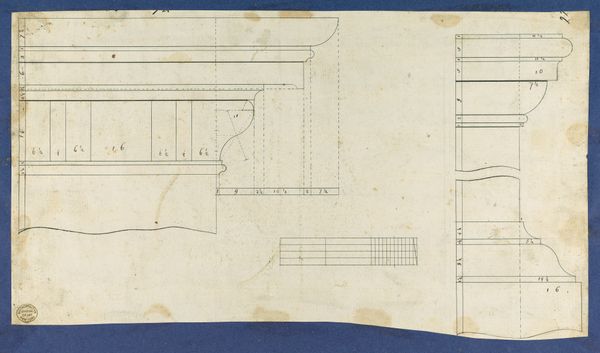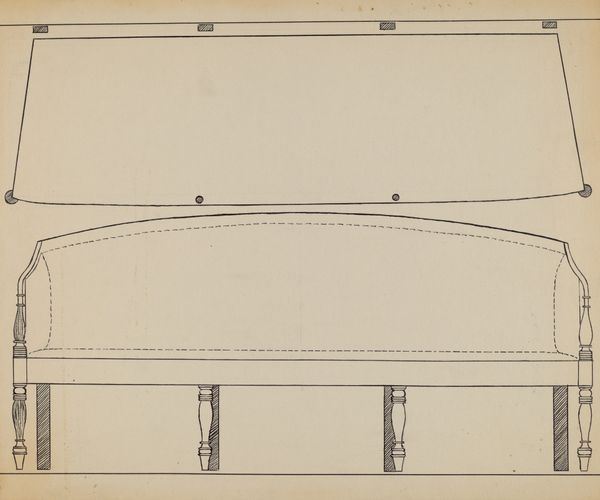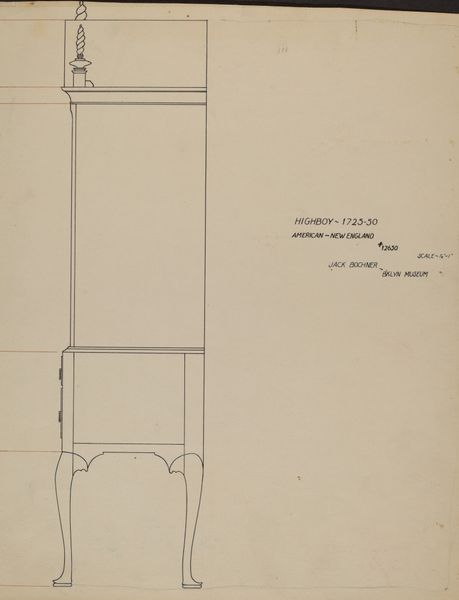
drawing, paper, pencil
#
drawing
#
paper
#
geometric
#
pencil
#
modernism
#
watercolor
Dimensions: overall: 22.9 x 29 cm (9 x 11 7/16 in.) Original IAD Object: none given
Copyright: National Gallery of Art: CC0 1.0
Curator: Here we have a drawing titled "Marble Top Table" by George Nelson, created sometime between 1935 and 1942. It’s rendered in pencil, with perhaps a touch of watercolor, on paper. Editor: The first thing that strikes me is the elegance in the linearity. The precise dimensions, the meticulous cross-sections... It speaks to the artist's deep understanding of form and spatial relationships. Curator: Absolutely. But I see more than just form; I see intent. Nelson designed this piece for the dining room of the Corbin House, reflecting the aspirations and social context of a family during that time, probably wealthy ones to be having marble topped table designs presented to them by big names such as George Nelson. This table represents more than just furniture; it represents status and cultural values of domestic life during the early to mid 20th century. Editor: An interesting viewpoint. However, if we delve deeper into the lines themselves, we observe how Nelson utilizes the curve to guide the viewer's eye. The flowing lines of the legs, counterposed by the sharp planarity of the tabletop, produce a tension, wouldn’t you say? And also, can we just appreciate his clever interplay with positive and negative space in the piece as well. Curator: Of course, I don't discount that. The design's formalism is clearly important, but it’s even more relevant when we consider the socio-economic implications. A sleek marble table could act as an emblem of progress and prosperity during the era after the great depression. Furthermore, furniture and design contribute significantly to performative gestures of race, gender, and identity that can't be avoided. Editor: A valuable point! But even when taking all that into account, this interplay of line, plane, and space remains central to my interpretation. Curator: Ultimately, by seeing how social and art history influence one another, we come to appreciate how seemingly everyday designs subtly embody significant human aspirations. Editor: And through the design's composition itself, we can begin to discern what the nature of those aspirations might entail.
Comments
No comments
Be the first to comment and join the conversation on the ultimate creative platform.
